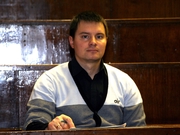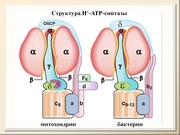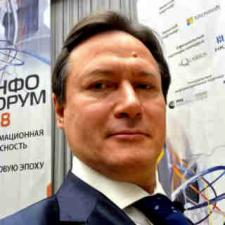Сеть сайтов с единой авторизацией
Календарь новостей
| Пн | Вт | Ср | Чт | Пт | Сб | Вс |
| 28 | 29 | 30 | 31 | 1 | 2 | 3 |
| 4 | 5 | 6 | 7 | 8 | 9 | 10 |
| 11 | 12 | 13 | 14 | 15 | 16 | 17 |
| 18 | 19 | 20 | 21 | 22 | 23 | 24 |
| 25 | 26 | 27 | 28 | 29 | 30 | 1 |
Подписка на новости
Рекомендуем:
Это интересно!
Темы публикаций
Статьи и книги
Научное определение термина "Биоэнергетика"
Биоэнергетика (биологическая энергетика), совокупность процессов преобразования энергии внешних ресурсов в биологически полезную работу живых систем, а также раздел биологии, изучающий эти процессы.
Иллюстрации
Видеофрагменты
04.03.2016
Отзывы о Токсидонт-Мае
Оригинал - https://www.youtube.com/watch?v=JbYgeYWbNwI
Купить Токсидонт-Май - http://alex-argo.ru/catalog/toksidont-mai-kupit.html
 29.09.2012
Glycolysis.m4v
29.09.2012
Glycolysis.m4v
Take a look at the ten enzymes that make possible the ten steps in the breakdown of sugar the process is called glycolysis.
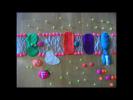 29.09.2012
The Electron Transport Chain
29.09.2012
The Electron Transport Chain
The Electron Transport Chain in really easy to see steps.
We did this process for a project in one of our biology classes at the University of Washington. I hope you enjoy and that it is very easy to understand.
 29.09.2012
Photosynthetic Electron Transport and ATP Synthesis
29.09.2012
Photosynthetic Electron Transport and ATP Synthesis
This animation from Mcgrahill tells you how ATP are synthesised during etc....
 29.09.2012
Calvin Cycle
29.09.2012
Calvin Cycle
Captions done by: http://www.youtube.com/user/lizzashley89
 29.09.2012
Процесс старения за 40 секунд
29.09.2012
Процесс старения за 40 секунд
Процесс старения за 40 секунд
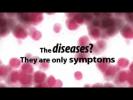 29.09.2012
Why aging must be stopped. Остановим старение.
29.09.2012
Why aging must be stopped. Остановим старение.
Aging is not just "imposition of the human race", it is a reason of serious economic issues. We have to stop aging, find the cure for it, or else serious catastrofic events will happen in the nearest future.
Старение - это не только унижение человеческого достоинсва. Существуют серьезные экономические причины остановить старение населения.
 29.09.2012
Долголетие без старение. Пептидны комплексы Eni-Sala
29.09.2012
Долголетие без старение. Пептидны комплексы Eni-Sala
Этот фильм о факторах, влияющих на здоровье современного человека и способе решения вопроса здорового долголетия при помощи пептидных комплексов Eni-Sala, отличительной способностью которых является РЕГЕНЕРИРУЮЩИЙ ПОТЕНЦИАЛ.
 29.09.2012
Лекарство против старения
29.09.2012
Лекарство против старения
Профессор Владимир Скулачев утверждает, что обнаружил антиоксидант, который останавливает постепенное - обусловленное старением - ухудшение здоровья людей.
Еще два года экспериментов и, по мнению профессора, он сможет взломать секрет старения.
 29.09.2012
Остановить старение
29.09.2012
Остановить старение
 29.09.2012
варфариновый некроз
29.09.2012
варфариновый некроз
 29.09.2012
APOPTOSIS
29.09.2012
APOPTOSIS
Aqu? les presento un video de la apoptosis "o muerte celular programada" por v?a extr?nseca.
 29.09.2012
Апоптоз - Apoptosis
29.09.2012
Апоптоз - Apoptosis
Процесс саморазрушения клетки. Анимация была опубликована в журнале Наука ( Science ) (Molecular Animation of Cell Death Mediated by the Fas Pathway, Sci. STKE 2007 (380).
 29.09.2012
sisel.co.ua Вебинар "Resveratrol. Исследования"
29.09.2012
sisel.co.ua Вебинар "Resveratrol. Исследования"
http://sisel.co.ua ведет вебинар Александр Мартынов (Латвия)
До 1972 года старением считалось накопленный объем поломок в организме. В 1972 году ученые открыли апоптоз -- запрограммированную смерть клетки. После этого считалось, что геном заставляет гибнуть клетки во благо организма, в котором он живет.
В 2002 году был открыт феноптоз -- запрограммированная смерть групп клеток (организма) и это изменило общее представление о старости. Геном убивает организм-хозяина, т.е. сам себя! Это происходит в целях общего эволюционного процесса, другими словами, ради более высшей цели, вид избавляется от индивидов.
Старость -- это постепенное и согласованное ослабление функций организма под управлением генома. Другими словами это ПРОГРАММА. А раз это программа, то ее можно...
Организм -- всего лишь машина, слепо выполняющая приказы генома. Как правило, эти приказы учитывают интересы организма, без которого геном гибнет. Однако некоторые из генетических программ нацелены прежде всего на ускорение эволюции или экспансию генома в биосфере. Такие программы и являются феноптозом -- котр-продуктивные для организма и продуктивные для эволюции. Именно из-за этих программ гибнут клетки и организм для ускорения эволюции, главной цели естественного отбора.
С другой стороны, человек в отличие от животных, обладает разумом и не заинтересован в своей биологической эволюции. Задача любой эволюции -- это максимально приспособить организм к среде. Современный человек не приспосабливается к среде, а приспосабливает среду под себя. Защиту своего генома он может обеспечить ограничением рождаемости, а не феноптозом (самоубийством).
Продукты SISEL -- это первые продукты, которые помогают человеку выйти из под гнета генома, чтобы стать HOMO SAPIENS LIBERATUS -- ЧЕЛОВЕКОМ РАЗУМНЫМ ОСВОБОЖДЕННЫМ.
ЭТО БУДУЩЕЕ ЧЕЛОВЕКА, HOMO SAPIENS LIBERATUS
По вопросам сотрудничества
с компанией Sisel
и приобретением продукции
обращайтесь
http://sisel.co.ua
http://twitter.com/siselcoua
skype: sanlun69
icq: 302461856
+380(96)403-58-54
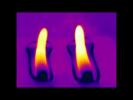 03.09.2012
In the Heat of the Night
03.09.2012
In the Heat of the Night
This video introduces the fascinating world of Hot Plants, flowers that generate heat (thermogenesis) to release scents and attract pollinators. We look at three thermogenic plant species, the monocots Philodendron bipinnatifidium and Colocasia esculenta and the eudicot, Nelumbo nucifera. Some plants such as Philodendron and Sacred lotus are also able to regulate their floral temperature, maintaining their flowers at up to 30 ?C above air temperatures over several days. Our research team is investigating how plants produce this heat and how they can regulate their temperature so precisely. We are also interested in why the plants produce heat. Is it to release particular scents to attract pollinators, to give a heat reward to the insects or does it also help the plants reproductive development?
www.ChloroFilms.org
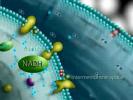 03.09.2012
http://youtu.be/-_8aYKcQZ_Q
03.09.2012
http://youtu.be/-_8aYKcQZ_Q
krebs cycle mitochondria
 03.09.2012
mitochondria ATP synthesis
03.09.2012
mitochondria ATP synthesis
mitochondria ATP synthesis
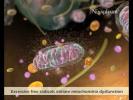 03.09.2012
Anti-aging 3D medical animation mitochondria for Ninapharm,produced by Virtual Point
03.09.2012
Anti-aging 3D medical animation mitochondria for Ninapharm,produced by Virtual Point
3D medical animation clip produced by virtual point of biological process.
The purpose of Ninapharm's researches is to offer an "Anti-Aging Protection" package based on antioxidants. The idea is to determine several diseases directly linked to antioxidants deficiencies and to offer a package which is only based on vegetal or fruit plant extracts and combines different actives that provides the right solution for a Anti-Ageing process.
ADS is dissolved quickly in the stomach and absorbed through the small intestine.
ADS is channeled through the blood to reach the body cells across the cell membrane, crosses the mitochondria double membrane and attacks the free radicals and reduces them.
ADS activates the antioxidant enzyme SOD.
Antioxidant efficacy at cellular level protection and re-generation of the mitochondria through an innovative amphiphilic compound ADS.
3D Video clip produced by Virtual Point Multimedia.
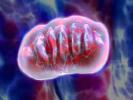 03.09.2012
mitochondria 3D animation
03.09.2012
mitochondria 3D animation
mitochondria, the power plant of the cell
 03.09.2012
THERMOGENESIS
03.09.2012
THERMOGENESIS
HEALTH INFORMATION
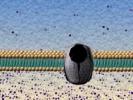 03.09.2012
Active and Passive Transport
03.09.2012
Active and Passive Transport
Biology video about active and passive transport
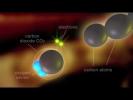 03.09.2012
OXPHOS - Oxidative Phosphorylation
03.09.2012
OXPHOS - Oxidative Phosphorylation
3Dme presents a look at OXPHOS - Oxidative Phosphorylation to help you visualise this complex process.
Through a fascinating process called oxidative phosphorylation, oxygen is used by the mitochondria to absorb electrons & help generate energy. This video uses beautiful, high definition 3D visualisation to take a look inside the human body to follow the path the oxygen molecules take from the in breath, osmosis through the arterial membrane, bound by haemoglobin in red blood cells, to reach the mitochondria. Once inside the mitochondria, the powerhouse of all cells, we demonstrate how oxygen is used to produce energy. This process includes the oxidation of macronutrients, electron carriers such as NADH, the electron transport chain & the cytochrome oxidase complex. Creative imagery has been used in this video to facilitate your understanding of the process of oxidative phosphorylation. We welcome your feedback & suggestions re: future topics you would like to see 3Dme produce for the upcoming App Video Catalogue.
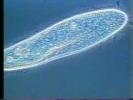 03.09.2012
flagella & cilia
03.09.2012
flagella & cilia
shows d' movement of flagella & cilia in algae
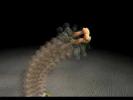 03.09.2012
Bacterial Flagellum - Evolution's Nightmare & Demise
03.09.2012
Bacterial Flagellum - Evolution's Nightmare & Demise
About the Bacterial Flagellum video and more:
More at http://www.detectingdesign.com
Detailed response to Nick Matzke's proposition on the bacterial flagellum:
http://www.idthink.net/biot/index.html
Another video (unrelated to the flagellum but very impressive):
http://aimediaserver.com/studiodaily/harvard/harvard.swf
-Evolutionist claim that all of life's features (example: the bacterial flagellum) can be explained by the purely material process described in their theory - accidental mutations sorted by natural selection. However, Intelligent Design (ID) theory makes the claim that certain features exist in the universe (including features of life) that are BEST explained by an intelligent cause (ie. a cause with a goal or purpose - ergo originating from a mind). With the scientific hypothesis of intelligent causation, and the objective explanatory filter developed by Dr William Dembski - http://www.uncommondescent.com - ID theory has quickly & firmly established itself as the "official" headache for the most ardent evolutionists today. Those that are informed know what is at stake, and that the explanatory power of the intelligent design theory is effectively guaranteed to supplant a purely materialist theory of evolution in time. This can be seen in how ID has reached a type of critical mass of acceptance - wherewith about a hundred classes are already taught in various universities (including the Ivy league). Classes whcih challenge purely materialistic thinking and more critically analyze the theory of evolution. The growth will continue as more objective & open minded scientists & students eager to explore better explanations continue to pursue better science.
Dr Michael Behe (author of "Darwins Black Box" & proponent of ID) popularized the term *irreducible complexity* to describe features in life which are complex and yet their function can not be reduced without destroying the primary function and usefulness of the system/function to the host organism. In the case seen in the video, the bacteruial flagellum has approximately 40 finely matched protein parts that must all be in place for the bacterial flagellum (w/ motor) to work. Furthermore, the assembly process of this motor is one of the key overlooked aspects of the problem of this systems development - ie. even the assembly program/process is arguably irreducibly complex. So, not only does a bacteria need to have the DNA coded for the correct proteins, the whole cell has to 'know' WHERE to put each protein part and WHEN to put it there. This is an astronomically improbable task to acheive through random fortuitous increases in instruction sequences (which to this day remains purely hypothetical - ie. imaginary) and parts specifications - consider the relative size of the cell surface area to the size of the bacterial flagellum and the chances each molecular part will assemble in the correct location & with the correct timing for assembly. So, the whole machine and the ORDER or sequence of system assembly is critical to success! If the whole universe were a fishbowl like earth's oceans - except fully teeming with bacteria - for 15 billion years, there would still be insufficient probablistic resources to accomplish the feat of builindg up such a comparable system even once. It's no wonder that ID theory is so satisfying to the many open minded scientist it has attracted.
Unfortunately, most evolutionist oppose this theory based strictly on materialistic beliefs. And this is a true detriment to real science. They stubbornly maintain their faith in natural selection - listen to Richard Dawkins - note especially the last words in the following video:
http://www.arn.org/docs/dawkins.mpg
[Excerpt - In exressing why natural selection is believed to find creative designs/solutions to all these kinds of intermediate problems]: "Natural selection is uhmmm..uhhh.. well, I suppose that is a sort of matter of faith on my part." - Richard Dawkins
If never before, you have now found that faith is a absolute neccessity and type of trade-secret of even the most outspoken of evolutionist. So, don't be their fool when they say evolution is a scientific fact. It's almost assured, in my opinion, that future generations will find it hard to believe that people ever accepted the theoy of evolution with the information we have at our disposal. Recent breakthroughs in accelerated protein folding algorithms will, I believe likely, lead to some very uncomforting news for adherents of evolutionary theory - news that could bring that described future closer to our doorsteps - and evolutionists fade into the history books as the mystics of these days... stay tuned. :)
 03.09.2012
Irreducible Complexity? The Bacterial Flagellum
03.09.2012
Irreducible Complexity? The Bacterial Flagellum
A clip from the NOVA production, "Judgment Day."
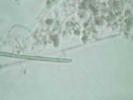 03.09.2012
Bacterial Motility
03.09.2012
Bacterial Motility
http://microbiologybytes.wordpress.com/
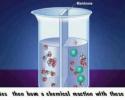 03.09.2012
Osmosis
03.09.2012
Osmosis
How does Osmosis work
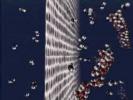 03.09.2012
Osmosis
03.09.2012
Osmosis
Osmosis is the diffusion of water down its concentration gradient. Normally one thinks of water as the solvent, and focuses on the concentration of the solutes, but water itself has a concentration in any solution.
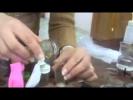 03.09.2012
anaerobic respiration experiments
03.09.2012
anaerobic respiration experiments
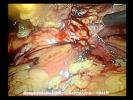 03.09.2012
Necrosis pancre?tica infectada: necrosectom?a por laparoscopia
03.09.2012
Necrosis pancre?tica infectada: necrosectom?a por laparoscopia
Este intervenci?n realizada por el Dr. Poves (Barcelona, Spain) fue presentada en el Congreso Nacional de la Asociaci?n Espa?ola de Cirujanos celebrado en Madrid en 2008. En el se muestra como se realiza por laparoscopia un desbridamiento de necrosis pancre?tica infectada localizada en la cabeza del p?ncreas. La necrosis pancre?tica es una complicaci?n de la pancreatitis aguda y uno de sus riesgos es que puede infectarse. Si esto sucede debe realizarse una evacuaci?n del tejido infectado y del pus (absceso). M?s informaci?n www.ipoves.com.
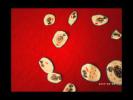 03.09.2012
Necrosis
03.09.2012
Necrosis
In this chilling sequel to "APOPTOSIS," Michael Paquet (writer, director, producer) reveals to the viewer the TRUE MEANING OF HORROR. Prepare to be chilled to the bone, in this stunning next chapter, "NECROSIS: A Cellular Horror."
You will be inoculated with FEAR!
Necrosis (def): the death of a cell on account of another cell.
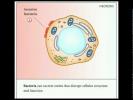 03.09.2012
Necrosis VS apoptosis - www.bahriandoctors.com -
03.09.2012
Necrosis VS apoptosis - www.bahriandoctors.com -
Mechanisms of cell death:
Necrosis VS apoptosis
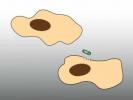 03.09.2012
Apoptosis
03.09.2012
Apoptosis
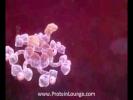 03.09.2012
Apoptosis
03.09.2012
Apoptosis
Protein Lounge animations @ http://www.proteinlounge.com/Animation/Animation.aspx
Apoptosis is a cell suicide mechanism that enables metazoans to control cell number in tissues and to eliminate individual cells that threaten the animal's survival. Certain cells have unique sensors, termed Death Receptors, on their surface, which detect the presence of extracellular death signals and, in response, rapidly ignite the cell's intrinsic apoptosis machinery. Cytotoxic T cell with Fas ligand binds to the Fas receptor on target cell and induces apoptosis through a cytoplasmic Death Domain that interacts with signaling adaptors like FADD (Fas-Associated Death Domain). FADD recruits the inactive Procaspase8, which is proteolytically activated to Caspase8, which further cleaves and activate downstream effector Caspase3.
Activated BAX within the mitochondrial membrane leads to creation or alteration of membrane pores, resulting in Mitochondrial-Outer-Membrane Permeabilization that causes release of Cytochrome-C into the cytosol. Cytochrome-C associates with APAF1 protein and Procaspase9 to form the apoptosome, which activates Caspase9, leading to activation of downstream effector caspases, including Caspase3. Caspase3 cleaves ICAD-CAD heterodimer to free CAD to cause DNA fragmentation, thus causing apoptosis.
This animation illustrates the detailed process of apoptosis by extrinsic and intrinsic pathways.
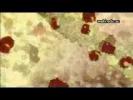 03.09.2012
Apoptosis
03.09.2012
Apoptosis
aka Cell Death. Apoptosis is a process where a cell is degraded in order for it to be ultimately engulfed and recycled. Apoptosis can occur when a cell has become mutated and is on the verge of becoming a cancer. Apoptosis is also the reason why we don't have webbed hands and feet.
What basically happens is that the killer t cell communicates with the diseased cell by adhering to it by binding its death ligand to the death receptor on the diseased cell. This causes adapter proteins to attach to the cytosolic side of the receptor. This leads to a signal cascade which involves the recruitment of various other proteins and ultimately results in the death of the cell.
Credits: Drew Berry
http://features.cgsociety.org/story_custom.php?story_id=3195
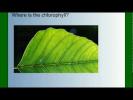 03.09.2012
Photosynthesis Part 1: An Overview
03.09.2012
Photosynthesis Part 1: An Overview
An overview of photosynthesis in preparation of more detailed look into the specific reactions involved in photosynthesis
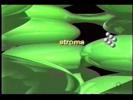 03.09.2012
Photosynthesis
03.09.2012
Photosynthesis
A summary of the photosynthesis process, including light or dependent reactions and dark, Calvin cycle, or independent reactions.
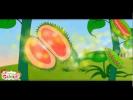 03.09.2012
Photosynthesis - Full Lesson - Kids-www.makemegenius.com -One of the best Indian education website
03.09.2012
Photosynthesis - Full Lesson - Kids-www.makemegenius.com -One of the best Indian education website
Visit www.makemegenius.com ,one of the best Indian education website for children. See children Science education videos for free
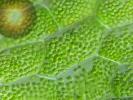 03.09.2012
Photosynthesis Video
03.09.2012
Photosynthesis Video
A video I had to make for my accelerated biology class. I made the first half and my partner made the next half.
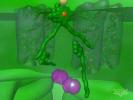 03.09.2012
Photosynthesis (Light Reactions)
03.09.2012
Photosynthesis (Light Reactions)
The NDSU Virtual Cell Animation Project presents 'Photosynthesis - The Light Reactions'. For more information please see http://vcell.ndsu.edu/animations
Photosynthesis is the means by which plants make use of chlorophyll and light to produce energy. This section covers the basic stages of the light reactions in the photosynthetic electron transport chain.
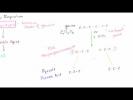 03.09.2012
Glycolysis
03.09.2012
Glycolysis
Overview of glycolysis
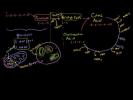 03.09.2012
Krebs / Citric Acid Cycle
03.09.2012
Krebs / Citric Acid Cycle
Overview of the Krebs or Citric Acid Cycle
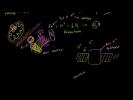 03.09.2012
Electron Transport Chain
03.09.2012
Electron Transport Chain
Overview of the Electron Transport Chain
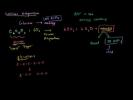 03.09.2012
Introduction to Cellular Respiration
03.09.2012
Introduction to Cellular Respiration
Introduction to cellular respiration, glycolysis, the Kreb's Cycle, and the electron transport chain
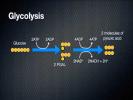 03.09.2012
Cellular Respiration - Energy in a Cell
03.09.2012
Cellular Respiration - Energy in a Cell
http://www.interactive-biology.com - In this lecture, I talk about Cellular respiration, which consists of Glycolysis, the Krebs Cycle and the Electron Transport Chain.
I deal with how Glucose is broken down and how ATP is made. Since energy is important for all living things, it's important to understand how ATP, the energy currency of the body, works.
http://www.interactive-biology.com
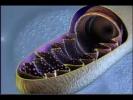 03.09.2012
How Cells Obtain Energy
03.09.2012
How Cells Obtain Energy
Cells and energy - Video for Hawthorn Academy Science Classes.
This video explains the processes associated with cellular energy processing.
Important vocabulary -
chloroplast, photosynthesis, mitochondrion, respiration, pgal (phosphoglyceraldehyde) ADP, ATP
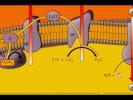 03.09.2012
Oxidative Phosphorylation
03.09.2012
Oxidative Phosphorylation
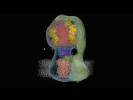 03.09.2012
F1 ATP synthase
03.09.2012
F1 ATP synthase
Credit: Dr. John E. Walker, Medical Research Council, Dunn Human Nutrition Unit, Cambridge, UK.
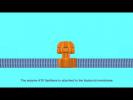 03.09.2012
ATP Synthase Animation
03.09.2012
ATP Synthase Animation
ATP Synthase the Motor of Life by Nasif Nahle
When we talk about the macroscopic world, we define the term structure from an anatomical, histological and morphological viewpoint. However, we often ignore the fact that we have to make a qualitative jump in the progression from macrophysical systems to microphysical systems. When we investigate the system as a whole, we must not limit our knowledge simply to macrophysical parameters which can be measured, as length, distance, volume, etc., but to effective parameters which are further related with electric charges, electromagnetic fields, quantum energy and electrodynamic phenomena. We set in motion a picture of a macrophysical system, i.e. a plant. We can describe its height, its volume, its weight, the quantity of leaves it has, its color, etc.; however, as we move our observations towards smaller and smaller portions of the macroscopic structure, we arrive at a point at which the macrophysical qualities leap into another realm where the parameters with which we previously classified the living organism no longer have any utility. Of course, the transition is so subtle that many of us succumb to the idea that there is no more physical explanation to describe life. If we understand that there is no boundary, but rather a continuum which links every process in every living system with the Universe, we will not be so easily fooled by the illusion of a separation between the macrophysical world and the microphysical world.
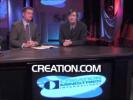 03.09.2012
ATP synthase - the world's tiniest motor
03.09.2012
ATP synthase - the world's tiniest motor
For more details visit: http://creation.com/creation-magazine-live-episode-38
ATP synthase is the world's tiniest motor. Spinning at up to 7000 RPM to manufacture ATP, the energy currency of the cell, it is a key requirement for life and it is powerful evidence against evolution.
Watch an animated video of ATP in action here: http://www.youtube.com/watch?v=W3KxU63gcF4
Main article:
From Creation magazine 31(4) ATP Synthase http://creation.com/atp-synthase
Related articles
• Design in living organisms (motors: ATP synthase) http://creation.com/design-in-living-organisms-motors-atp-synthase
• Fantastic voyage http://creation.com/fantastic-voyage
• DNA repair enzyme http://creation.com/DNA-repair-enzyme
• Notable evolutionists retreating from empiricism to arguments from anology http://creation.com/notable-evolutionists-retreating-from-empiricism-to-arguments-from-analogy
• Can evolution produce new organs or structures? http://creation.com/images/pdfs/tj/j19_2/j19_2_76-82.pdf
For more information on the creation/evolution issue visit http://creation.com
 03.09.2012
The ATP Synthase Enzyme
03.09.2012
The ATP Synthase Enzyme
http://creation.com
This animated sequence shows the ATP Synthase enzyme in operation. The animation is based on an incredible series of scientific discoveries. Only the colours show artistic licence.
ATP, or Adenosine Tri-Phosphate, is the energy currency of the cell. ATP is produced by a tiny molecular rotary motor, rotating at up to 7,000 rpm. These are so small that 100,000 would fit side-by-side in a millimetre. A current of protons drives the motor, unlike man-made electric motors, which use electrons.
This portion of the enzyme is where Adenosine Di-Phosphate is combined with a phosphate ion, in the presence of a catalyst to produce ATP which is then released, making way for the next cycle. A top view of the enzyme shows the sequential operation. Almost every bio-chemical process in your body requires ATP.
Such a nano-machine exhibits all the characteristics of super-intelligent design. ATP is vital for life and many of these motors were needed before the first living cell could exist. An evolutionary impossibility!
http://creation.com
Related Articles:
Design in living organisms (motors: ATP synthase): http://creation.com/design-in-living-organisms-motors-atp-synthase
ATP synthase: majestic molecular machine made by a mastermind: http://creation.com/atp-synthase
Is ATP synthase found in all life?: http://creation.com/atp-synthase-in-all-life
Related Products:
The Creation Answers Book - http://creation.com/store_redirect.php?sku=10-2-505
Creation Magazine subscription - http://creation.com/store_redirect.php?sku=90-3-003
What Darwin Couldn't Know tract - http://creation.com/store_redirect.php?sku=00-1-534
Exploring the World of Biology book - http://creation.com/store_redirect.php?sku=10-1-535
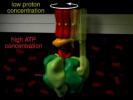 03.09.2012
ATP Synthase
03.09.2012
ATP Synthase
An amazing molecular machine, ATP synthase, can run use electrostatic potential energy stored in a proton gradient to generate ATP. Under different conditions, it can run in the opposite direction, using ATP to build a proton gradient. Created by Graham Johnson of fivth.com and Graham Johnson medical media www.grahamj.com, for Molecular Biology of the Cell, 4e by Alberts, Walter, et al, Gardland Publishers. ©2002
Please visit www.grahamj.com for examples of other molecular machines.
Update:
Glad to hear my APT synthase movie has helped so many people learn an otherwise complicate subject.
I put a lot of time into making this with Peter Walter (UCSF) and Mike Morales (Garland Publisher) back in 2001. http://www.youtube.com/user/garlandscience/featured
A new software project I work on with Ludovic Autin in Art Olson's lab, can make it a lot easier to make a movie like this, and we distribute it for free. Check out: http://epmv.scripps.edu if you want to try it out.
-Graham
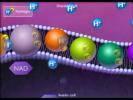 11.08.2012
Electron Transport Chain
11.08.2012
Electron Transport Chain
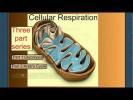 11.08.2012
Cellular Respiration Part 1: Introduction & Glycolysis
11.08.2012
Cellular Respiration Part 1: Introduction & Glycolysis
Details on Cellular Respiration. This video introduces the overall reaction, lists the stages and explains the details of glycolysis
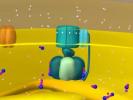 11.08.2012
Gradients (ATP Synthases)
11.08.2012
Gradients (ATP Synthases)
NDSU Virtual Cell Animations Project animation 'Gradients (ATP Synthase)'. For more information please see http://vcell.ndsu.edu/animations
Gradients are used to create energy that can power biological cyles. ATP synthase is powered by a hydrogen gradient, located in the mitochondria. This section covers the action of this specific gradient.
Новости 1 - 54 из 54
Начало | Пред. | 1 | След. | Конец
 15.11.2012
Комплекс Гольджи, животная клетка
15.11.2012
Комплекс Гольджи, животная клетка
Аппарат Гольджи (комплекс Гольджи) — мембранная структура эукариотической клетки, органелла, в основном предназначенная для выведения веществ, синтезированных в эндоплазматическом ретикулуме. Аппарат Гольджи был назван так в честь итальянского учёного Камилло Гольджи, впервые обнаружившего его в 1898 году.
Персоналии
Видеолекции
 Годовой курс видеолекций «Биохимия» профессора А.Д.Виноградова
Годовой курс видеолекций «Биохимия» профессора А.Д.Виноградова
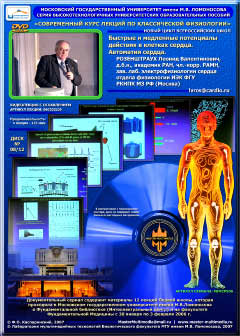 Видеолекция «Быстрые и медленные потенциалы действия в клетках сердца. Автоматия сердца» академика РАН Л.В.Розенштрауха
Видеолекция «Быстрые и медленные потенциалы действия в клетках сердца. Автоматия сердца» академика РАН Л.В.Розенштрауха
Просмотр
Заказ абонемента
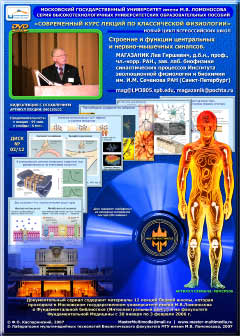 Видеолекция «Строение и функции центральных и нервно-мышечных синапсов» чл.корр. РАН Л.Г.Магазаника
Видеолекция «Строение и функции центральных и нервно-мышечных синапсов» чл.корр. РАН Л.Г.Магазаника
 Мембранный потенциал покоя и потенциал действия (чл.-корр. РАМН А.Л.Зефиров). Подписка на онлайн-просмотр | Артикул 20060130FBM06L01os
Мембранный потенциал покоя и потенциал действия (чл.-корр. РАМН А.Л.Зефиров). Подписка на онлайн-просмотр | Артикул 20060130FBM06L01os
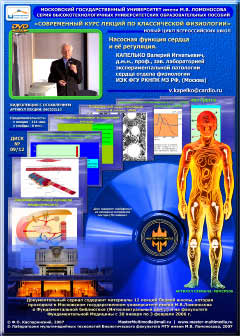 Видеолекция «Насосная функция сердца и её регуляция» профессора В.И.Капелько
Видеолекция «Насосная функция сердца и её регуляция» профессора В.И.Капелько
 Видеолекция «Физиология системы крови» академика РАМН Ю.М. Захарова
Видеолекция «Физиология системы крови» академика РАМН Ю.М. Захарова
 Видеолекция «Физиология почки» академика РАН Ю.В.Наточина
Видеолекция «Физиология почки» академика РАН Ю.В.Наточина
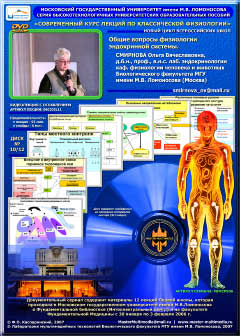 Видеолекция «Общие вопросы физиологии эндокринной системы» профессора О.В.Смирновой
Видеолекция «Общие вопросы физиологии эндокринной системы» профессора О.В.Смирновой
 Видеолекция «Рецепция и внутриклеточная сигнализация» академика РАН и РАМН В.А. Ткачука
Видеолекция «Рецепция и внутриклеточная сигнализация» академика РАН и РАМН В.А. Ткачука
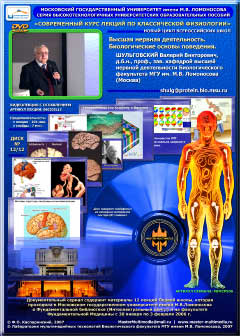 Видеолекция «Высшая нервная деятельность. Биологические основы поведения» профессора В.В.Шульговского
Видеолекция «Высшая нервная деятельность. Биологические основы поведения» профессора В.В.Шульговского
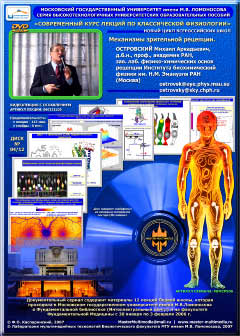 Механизмы зрительной рецепции (академик РАН М.А.Островский). DVD-видеолекция | Артикул 060131L05
Механизмы зрительной рецепции (академик РАН М.А.Островский). DVD-видеолекция | Артикул 060131L05
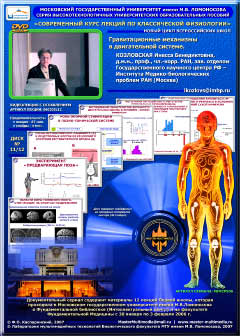 Видеолекция «Гравитационные механизмы в двигательной системе» чл.-корр. РАН И.Б.Козловской
Видеолекция «Гравитационные механизмы в двигательной системе» чл.-корр. РАН И.Б.Козловской
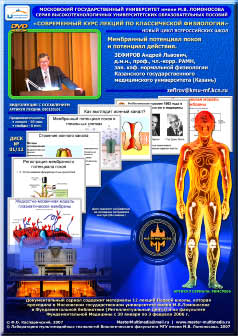 Мембранный потенциал покоя и потенциал действия (чл.-корр. РАМН А.Л.Зефиров). DVD- видеолекция | Артикул 060130L01
Мембранный потенциал покоя и потенциал действия (чл.-корр. РАМН А.Л.Зефиров). DVD- видеолекция | Артикул 060130L01
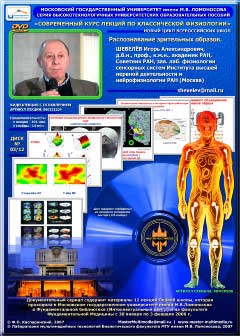 Видеолекция «Распознавание зрительных образов» академика РАН И.А. Шевелёва
Видеолекция «Распознавание зрительных образов» академика РАН И.А. Шевелёва
 Видеолекция «Молекулярные механизмы пристрастий человеческого организма» академика РАМН И.П.Ашмарина
Видеолекция «Молекулярные механизмы пристрастий человеческого организма» академика РАМН И.П.Ашмарина
Увлекательная лекция о структурах и функциях наркотических веществ и физиологических механизмах возникновения пристрастий и зависимостей у человеческого организма
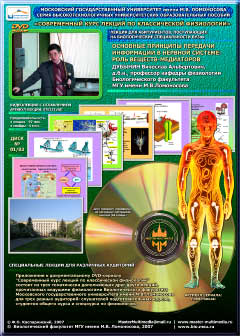 Видеолекция «Основные принципы передачи информации в нервной системе. Роль веществ-медиаторов» профессора В.А.Дубынина
Видеолекция «Основные принципы передачи информации в нервной системе. Роль веществ-медиаторов» профессора В.А.Дубынина
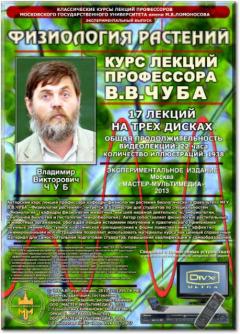 20.05.2013
Курс видеолекций «Физиология растений» профессора В.В.Чуба
20.05.2013
Курс видеолекций «Физиология растений» профессора В.В.Чуба
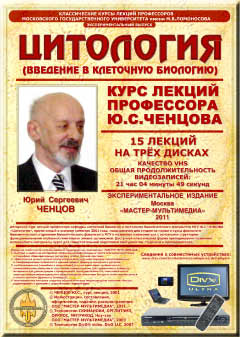 Курс видеолекций «Цитология» профессора Ю.С.Ченцова
Курс видеолекций «Цитология» профессора Ю.С.Ченцова
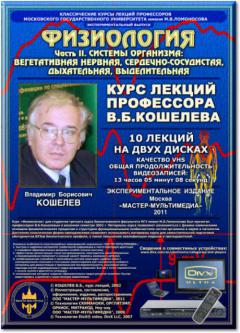 Курс видеолекций «Физиология висцеральных систем» профессора В.Б.Кошелева
Курс видеолекций «Физиология висцеральных систем» профессора В.Б.Кошелева
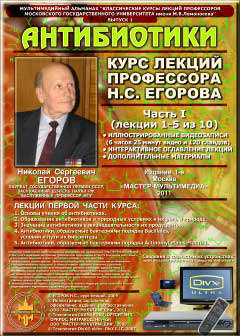 Курс видеолекций «Антибиотики» заслуженного профессора МГУ Н.С.Егорова
Курс видеолекций «Антибиотики» заслуженного профессора МГУ Н.С.Егорова
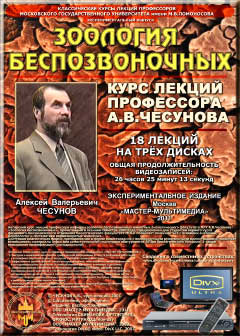 Курс видеолекций «Зоология беспозвоночных» профессора А.В.Чесунова
Курс видеолекций «Зоология беспозвоночных» профессора А.В.Чесунова
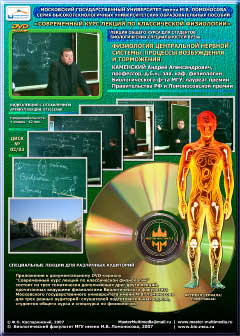 Видеолекция «Физиология центральной нервной системы. Процессы возбуждения и торможения» профессора А.А.Каменского
Видеолекция «Физиология центральной нервной системы. Процессы возбуждения и торможения» профессора А.А.Каменского
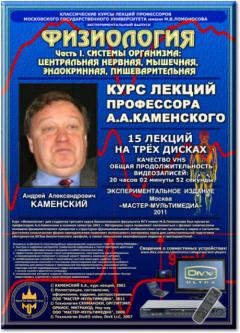 Курс видеолекций «Физиология возбудимых систем» профессора А.А.Каменского
Курс видеолекций «Физиология возбудимых систем» профессора А.А.Каменского
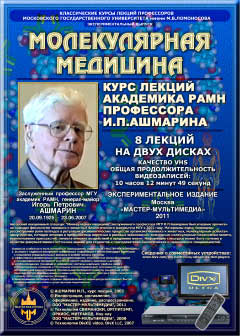 Курс видеолекций «Молекулярная медицина» академика РАМН И.П.Ашмарина
Курс видеолекций «Молекулярная медицина» академика РАМН И.П.Ашмарина
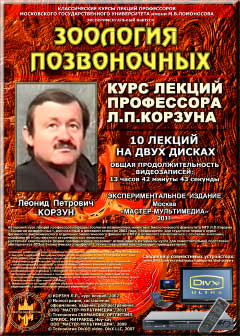 Курс видеолекций «Зоология позвоночных» профессора Л.П.Корзуна
Курс видеолекций «Зоология позвоночных» профессора Л.П.Корзуна
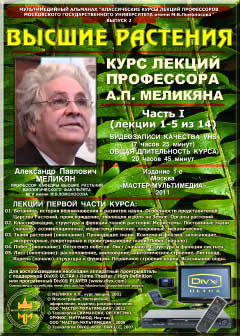 Курс видеолекций «Высшие растения» профессора А.П.Меликяна
Курс видеолекций «Высшие растения» профессора А.П.Меликяна


